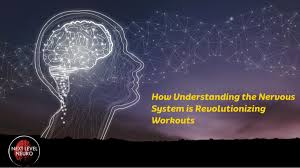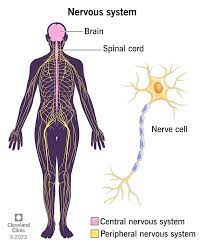Your nervous system is your body’s command center. It’s made up of your brain, spinal cord and nerves. Your nervous system works by sending messages, or electrical signals, between your brain and all the other parts of your body. These signals tell you to breathe, move, speak and see, for example. Your nervous system keeps track of what’s going on inside and outside of your body and decides how to respond to any situation you’re in.
Your nervous system regulates complicated processes like thoughts and memory. It also plays an essential role in the things your body does without thinking, like blushing, sweating and blinking.
Your nervous system’s main function is to send messages from various parts of your body to your brain, and from your brain back out to your body to tell your body what to do. These messages regulate your:
- Thoughts, memory, learning and feelings.
- Movements (balance and coordination).
- Senses (how your brain interprets what you see, hear, taste, touch and feel).
- Wound healing.
- Sleep.
- Heartbeat and breathing patterns.
- Response to stressful situations, including sweat production.
- Digestion.
- Body processes, such as puberty and aging.
How does the nervous system work?
Your nervous system uses nerve cells called neurons to send signals, or messages, all over your body. These electrical signals travel among your brain, skin, organs, glands and muscles.
The messages help you move your limbs and feel sensations, like pain. Your eyes, ears, tongue, nose and the nerves all over your body take in information about your environment. Then, nerves carry that data to and from your brain.
There are different types of neurons. Each type of neuron has a different job:
- Motor neurons take signals from your brain and spinal cord to your muscles. They help you move. They also assist with breathing, swallowing and speaking.
- Sensory neurons take information from your senses (what you see, touch, taste, etc.) to your brain.
- Interneurons communicate between motor and sensory neurons. These neurons regulate your movement in response to sensory information (like moving away from a hot surface) and play a role in how you learn, think and remember.


